If you are looking for interesting Black history sites in the South, then check out this list. The South has a very dark history that is closely connected to Black history in America. As the major point of entry for enslaved peoples, the South played a large role in the discrimination of Black people for centuries.
So, when visiting Black historical sites in the South, it is important to keep this history in mind. We’ve done our best to find sites that highlight the true history of Black people in America. Some of those sites have a dark history while others celebrate Black accomplishments in America, and in particular the South.
Highlighting both the good and the bad of Black history in the South is important to us. Terrence is a Black American with Jamaican and Haitian heritage who has lived in the South for half his life. While recognition of Black Americans has come a long way, there is still a lot of work to be done. We believe that people should face the past and learn from it, instead of trying to sweep it under the rug.
That being said, people often focus on the bad parts only, and this shouldn’t be the case!
We’re hoping that some of these sites encourage you to learn more about Black history in the Southern United States. So, with that in mind, let’s take a look at 16 interesting Black history sites in the South.

16 Interesting Black History Sites In The South, USA
Tuskegee Institute National Historic Site, Alabama
Booker T. Washington arrived in Alabama in 1881 with the plan to build a university for Black Americans. That is when he started literally building the Tuskegee Institute. The buildings were designed by the first Black graduate of the Massachusetts Institute of Technology, Robert R. Taylor.
The institute also had notable Black scholars like George Washington Carver teaching students of all education levels. Carver’s teaching had a massive impact on the area as well as making the Tuskegee Institute a prominent place for Black American’s to attend school.
Now you can tour the buildings built by the students, the George Washington Carver Museum, and the Booker T. Washington house. It is one of the best black history sites in Alabama to learn about Black education efforts after the Civil War.
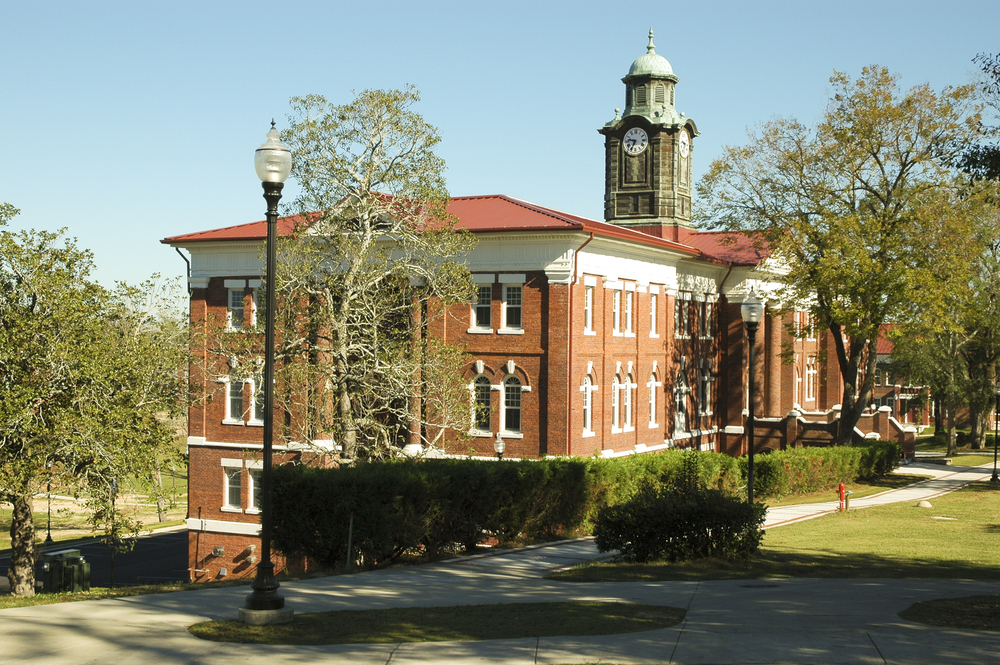
Little Rock, Arkansas
The town of Little Rock is one of the more important Black history sites in Arkansas. In Little Rock, you can visit two major Black history sites that played a part in the desegregation of schools. The first is Little Rock Central High School.
Now a National Historic Site, the school was where the confrontation occurred over the recent Brown vs Board of Education ruling. There, force desegregation occurred, much to the anger of many in the town.
The nine students who desegregated the school stayed at the Daisy Bates House. The Daisy Bates House is another National Historic Site in Little Rock. Visitors can tour the home and get a better understanding of what life was like for those nine Black students who forced Little Rock Central High to desegregate.
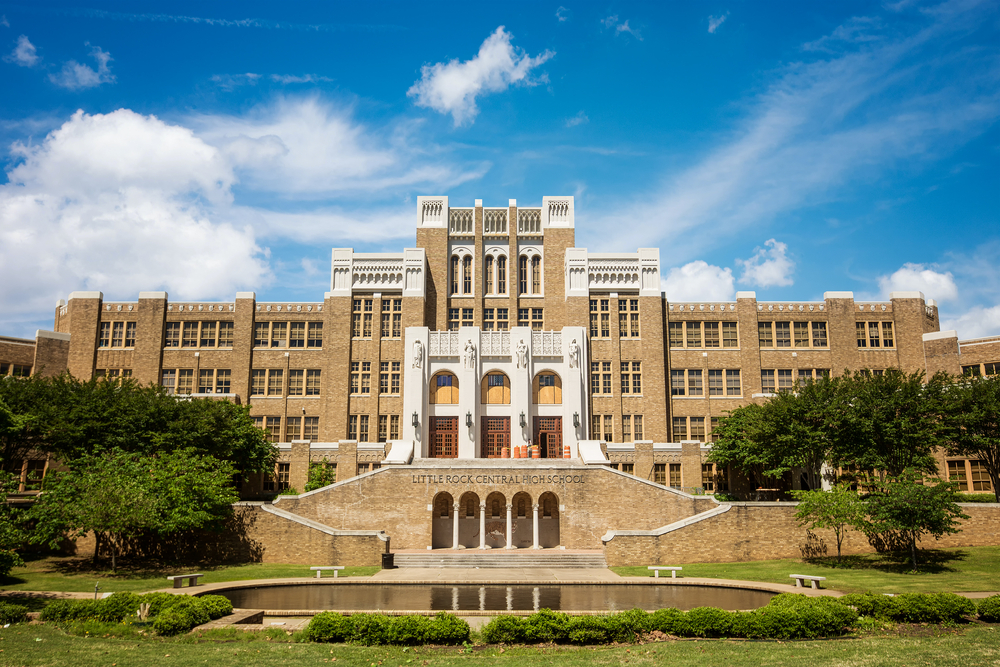
George Black House and Brick Yard, North Carolina
George Black was a renowned brick maker in Winston-Salem North Carolina. The son of an enslaved Black man, Black learned to make bricks when he was young from white brickmakers before mastering the skill himself. As early as the 1920’s, Black earned a reputation for the quality and durability of his bricks, making him a respected artisan.
His bricks formed the structure for some of Winston-Salem’s finest homes, churches, and businesses. Black’s bricks were even used for restorations in places like Colonial Williamsburg. At one point in his life, the State Department asked Black to travel to Guyana and teach the people there how to make bricks.
His skill and willingness to teach made him a national and international hero in the 1970’s when he was in his 90s. He was asked to visit the White House and the North Carolina Governor gave him special recognition. After his death, his home and brickyard were placed on the National Register of Historic Places for his significant impact on Black history as well as state history.
Fort Mose, Florida
Fort Mose is one of the most important Black history sites in Florida. During the Spanish occupation of Florida, the Black Spanish community formed the town. Fort Mose is known as the only free-Black town that existed in the Southern United States that was sponsored by a European country.
The Black men and women who lived freely in Fort Mose fought over years alongside the Spanish and against the Spanish for their freedom. The Spanish had a different attitude towards enslaved peoples and offered them more privileges than what early American’s did.
Those that lived at Fort Moses eventually immigrated to Cuba, but they left a lasting impact on enslaved peoples in America and the city of St. Augustine. Now visitors can tour the fort and learn about the life of free Black Spaniards.

Whitney M. Young Jr. Birthplace, Kentucky
If you are looking for Black history sites in Kentucky, make sure to check out the Whitney M. Young Jr. Birthplace. Young was an important member of the Civil Rights Movement. He started his career in the military where he quickly became interest in race relations. Young eventually became President of the Urban League’s Omaha Nebraska branch.
It was there that he assisted Black people in getting jobs that were previously only held by white workers. As he continued to rise through the ranks, working at the Atlanta University and eventually the NAACP, he fought to end employment discrimination in the South.
In 1968, he was awarded the Medal of Freedom for his efforts. His birthplace is now an important Historic Landmark in Kentucky where people can learn about his life and impact on equality in the workplace for Black people.
WROX Building, Mississippi
From 1946 to 1953 the WROX Building was home to the WROX radio station. The WROX station was specifically for Black listeners and had the first Black radio DJ, Early Wright. Wright hosted a nightly R&B show where he interviewed many iconic artists, both Black and white.
The WROX Building is now the home of the WROX Museum. The museum aims to tell the story of Mississippi’s first Black radio DJ and the history he created. Wright paved the way for Black radio DJs in the South and the WROX Museum celebrates that history. It is an amazing Black history site in Mississippi to learn about Black people in radio.
Freedmen’s Town National Historic District, Texas
Freedmen’s Town was originally created in Houston’s fourth ward for the recently freed enslaved peoples from nearby plantations. After the end of the Civil War, formerly enslaved peoples started immigrating to Texas to create communities for themselves.
Now, remnants of that original town still remain. Much of the town was destroyed over years of expansion and predatory building practices. In the 1980’s, what was left was brought together in a small National Historic Site.
Pieces that remain of the town include traditional homes, churches, and even some businesses. The fourth ward is a unique Black history site in the South worth a visit.
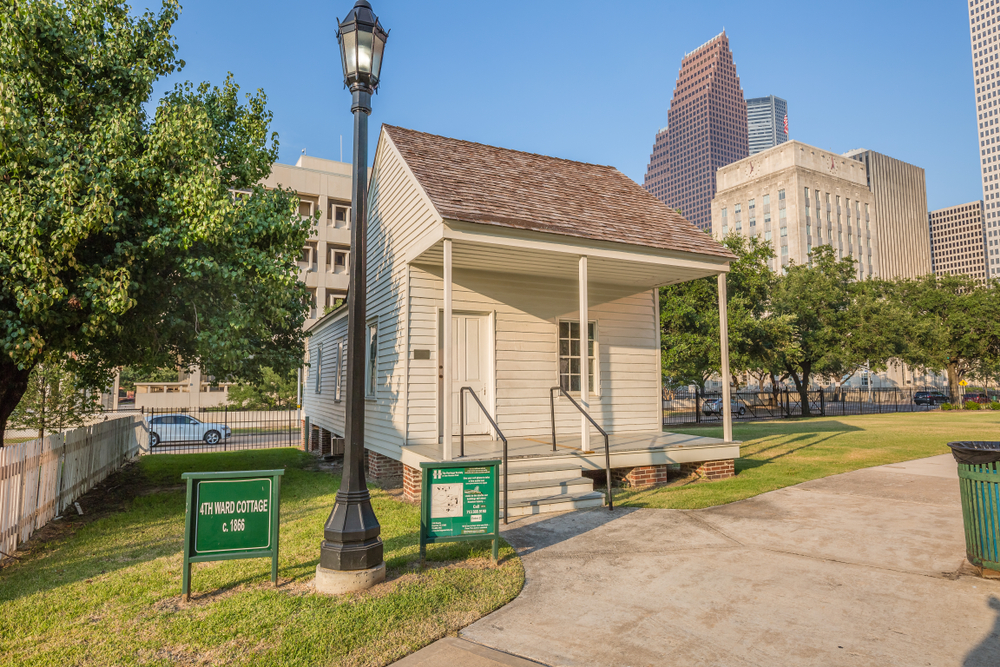
Arna Wendell Bontemps House, Louisiana
One of the best Black history sites in Louisiana is the Arna Wendell Bontemps House. Bontemps was a major Black literary figure that was a key contributor to the Harlem Renaissance. Even though he didn’t live there long, the Queen Anne revival home played a significant part in Bontemps’ early memories. Bontemps returned to his hometown in Louisiana later in life and visited frequently over his life. He referred to the home repeatedly in his writings.
In New York City, Bontemps was a major part of the Harlem Renaissance. The Harlem Renaissance was a literary movement created by the Black community in the Harlem neighborhood of New York City. Bontemps wrote along famous Black literary icons like Langston Hughes and paved the way for Black authors. Visitors can tour the childhood home that inspired Bontemps his whole life and learn about the author’s early life.
Martin Luther King Jr. Historic District, Georgia
The Martin Luther King Jr. Historic District is a very important piece of Black history in Georgia. The Historic District is home to several important buildings in Dr. Martin Luther King Jr.’s life. You can tour Dr. King’s birth place, pay your respects at his final resting place, and see the church he grew up in.
The Historic District also includes a Visitor’s Center, the DREAM Gallery, as well as the BEHOLD monument to Dr. King. Stroll through the ‘I Have A Dream’ World Peace Garden and understand Dr. King’s vision for a better world. The Martin Luther King Jr. Historic District is an excellent place to learn about one of the leaders of the Civil Rights Movement.
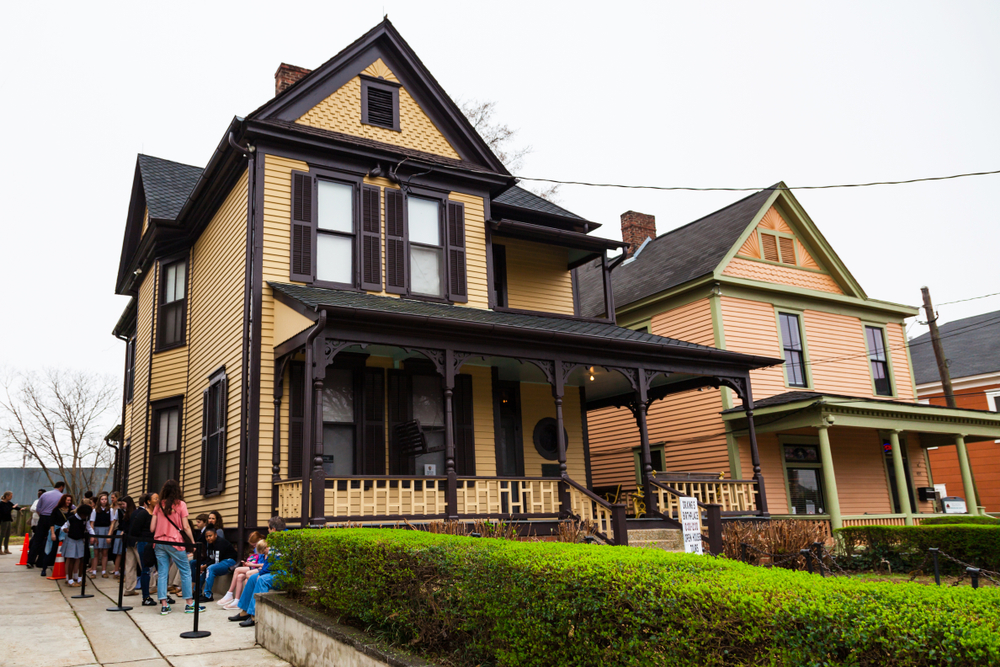
Mason Temple, Church of God in Christ, Tennessee
This Black history site in Tennessee is where Dr. Martin Luther King Jr made his final speech before his assassination. On April 3, 1968, Dr. King delivered what is now known as his ‘Mountaintop’ speech, where he called for non violent protests. The church is what is now part of the Civil Rights Museum on the Civil Rights Trail.
Before Dr. King’s speech, the Church was an important religious structure for Black Pentecostals in America. The church is the central headquarters and international sanctuary for Black Pentecostals. The church was built during WWII was difficult to get built due to war shortages. Once it was finally built, it was a testament of God’s power to provide to the greater Black community in the area. Visitors can now explore the church and learn more about its powerful history in the Black community.
Modjeska Monteith Simkins House, South Carolina
Modjeska Monteith Simkins was easily one of South Carolina’s greatest advocates for human rights. The one story cottage that Simkins called home was built between 1890 to 1895. Simkins lived in the home for 60 years until her death in 1992.
Simkins became known for her passion for social activism. She worked with both local and national Civil Rights leaders as well as NAACP lawyers. Notably, Thurgood Marshall stayed at her home while she was working with him. Before her death, Simkins received South Carolina’s highest honor, the Order of the Palmetto.
After her death, Simkins’ home was turned into a museum of her work. Visitors can tour four rooms that highlight her childhood, her career, and more. It is all viewed from the lens of the Civil Rights Movement which allows guests to fully understand her impact. If you are looking to learn more about an iconic female Civil Rights leader, then this is one of the Black history sites in the South.
F.W. Woolworth Building, North Carolina
Many who know about the Civil Rights movement will recognize this iconic Black history site in North Carolina. The F.W. Woolworth Building is home to some of the first sit ins in the South. At the lunch counter of Woolworth’s the A&T Four performed a non-violent sit in, which eventually led to more sit ins taking place in college towns throughout the South.
The building is now The International Civil Rights Museum. The counters remain in their original spot and visitors can view them, along with other artifacts of the Civil Rights Movement. There are permanent galleries as well as traveling exhibits. During the year the museum also hosts several events to further teach about the importance of social justice and civil rights.
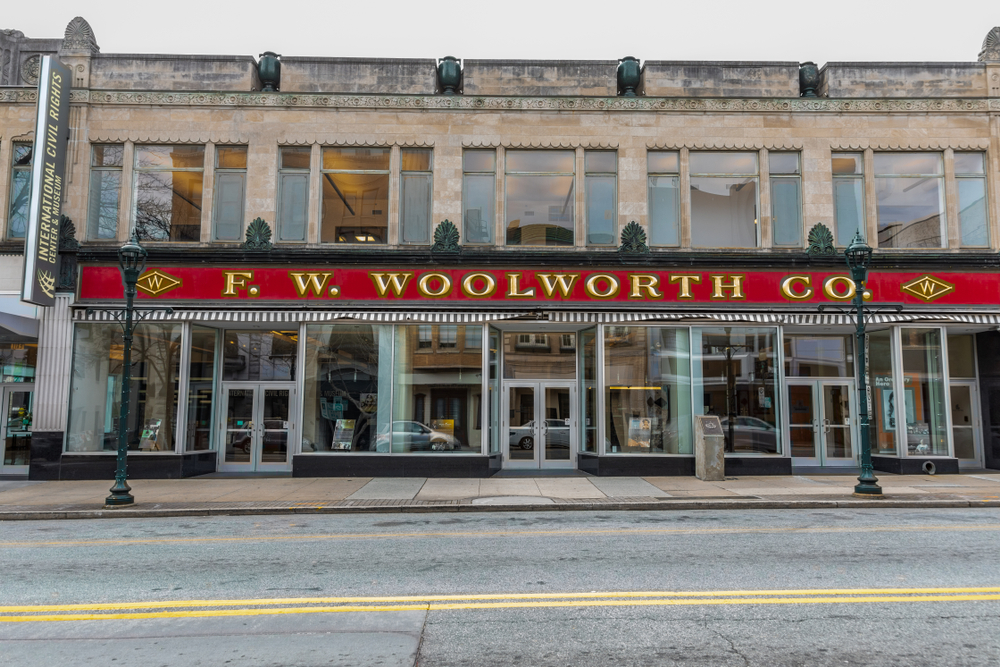
Penn Center, South Carolina
The Penn Center is located on St. Helena Island in South Carolina. It is an excellent Black history site in South Carolina to learn about early education for freed enslaved peoples. The Penn Center opened in 1862, during the Civil War, and when it first opened had 80 students. A few years later, towards the end of the Civil War, the school bought the land from a freed man and built a three room building.
The Penn Center, originally called the Penn School, was the first school in the South especially for the instruction for freed enslaved peoples. Visitors can now tour the historic site and learn about the Penn Center’s interesting history. On the grounds, there is also a Welcome Center that has a gift shop. The gift shop has items for purchase that help support the further funding of the center and support the community.
Beale Street Historic District, Tennessee
The Beale Street Historic District is a wonderful Black history site in Tennessee. There you can discover the history of Blues, a music style created predominantly by Black people in the South after the Civil War. Early Blues pulled influence from work and field songs traditionally sung by enslaved peoples working on the plantations of the South.
It grew from there, with influence from music that became more available to previously enslaved peoples after the Civil War, like folk and popular music that white people listened to. As the Black community in Memphis grew, so did the Blues. Beale Street became the hub of Blues. Now, people travel from all over the world to experience the home of the iconic music genre. This makes Beale Street easily one of the best Black history sites in the South.
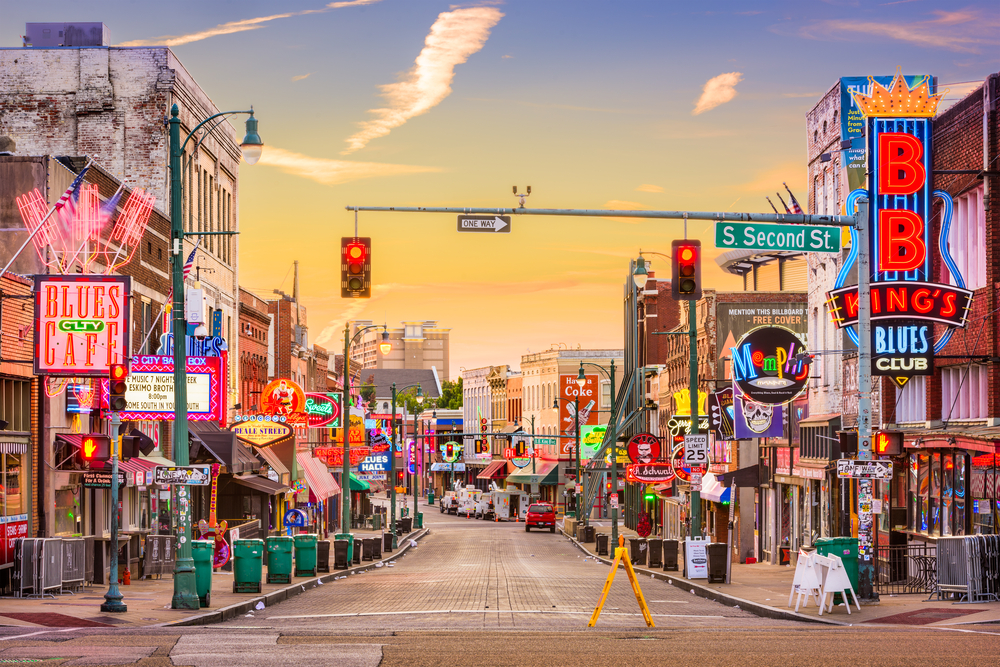
Ashton Villa, Texas
Recently there has been a push to recognize Juneteenth as a National Holiday. For those who don’t know, Juneteenth is the anniversary of public readings of the Emancipation Proclamation, announcing that all previously enslaved peoples were now free. This officially ended the practice of slavery in Texas, nearly two years after the Emancipation Proclamation was put into place by President Lincoln.
The Union General, Gordon Granger, and his occupying force of troops, were at Ashton Villa when he ordered the public readings. Granger’s announcement was made on June 19th, 1865, and became known as Juneteenth. The Villa is now home to the annual Juneteenth celebration. Juneteenth is an important moment in Black history and the Ashton Villa is worth visiting to celebrate that moment in American history.
New Kent School and George W. Watkins School, Virginia
The New Kent School and George W. Watkins School were part of the desegregation argument in Virginia. Members of the George W. Watkins School filed a suit against the New Kent School on the grounds that they were not desegregating their school as was now the law. After escalating it to the US Supreme Court, it was found that the New Kent School was behaving illegally.
The Supreme Court then forced the school district to create new schools that were open to students of all colors. It marked a huge moment in the fight for the permanent desegregation of schools. The schools are still in use today, but they are an important symbol of the power and effect of the Civil Rights Movement. They are one of the few Black history sites in the South that are still being used for their original purpose, and even if you just pass by them for a quick look, they are worth learning more about
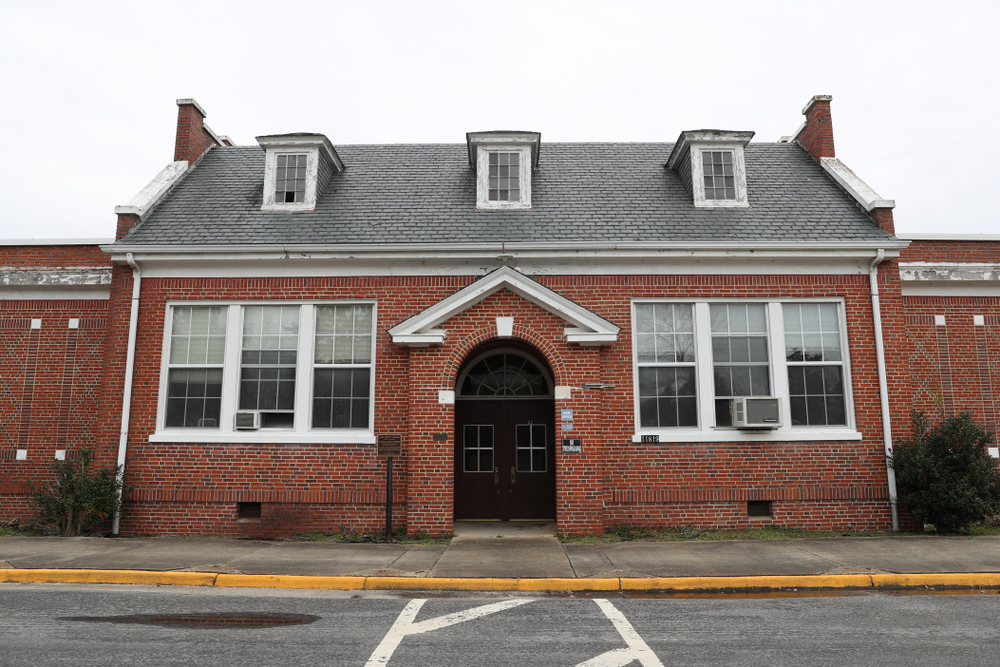
Have you had the chance to explore any of these interesting Black history sites in the South? There are so many places in the South to learn more about Black history in America. If you have, which one is your favorite? If you haven’t had the opportunity to see any of these, which one do you want to visit first?

 15 Best Places for Breakfast in Savannah
15 Best Places for Breakfast in Savannah